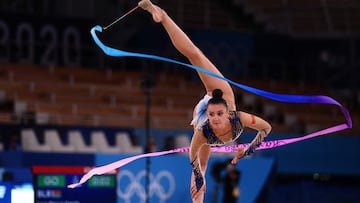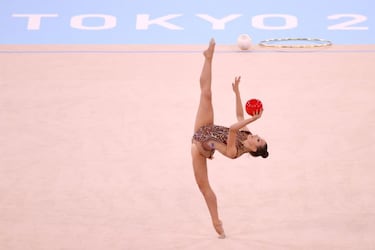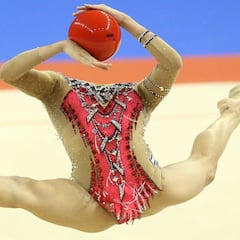Why are rhythmic gymnasts so tall? How tall are gymnasts?
Study proves elite rhythmic gymnasts' growth delay and strict diet cause height's of 5'9 to be commonly seen throughout the competitions.

After watching rhythmic and artistic gymnastics Olympic after Olympic the difference in height between both gymnasts gets more evident each time.
Average height and weight
One of the most important physical quality a rhythmic gymnast must have is a slim and stylish body. According to Spanish ex gymnast Susana Mendizábal, rhythmic gymnastics must be tall with long limbs, narrow trunk and hips and very thin. With an average height of 5 ft 4 in and weight of 94.8 pounds stereotypical canon for rhythmic implies Gymnasts' thinness is usually genetically determined.
Taller than age average
The Journal of Clinical Endocrinology & Metabolism have carried out a study called “Height Velocity and Skeletal maturation in Elite Female Rhythmic Gymnasts”, where they analyzed metabolical data of 104 elite gymnasts in between 12-23 years.

After analyzing this data, the study concluded than rhythmic gymnasts were taller and thiner than the average for their age. Among their findings, they determined one of the reasons why this was a fact was because gymnasts ave a delay in growth that catches later on in puberty due to the extreme intensity their bodies are put through and the strict diets they have to follow. Therefore, if for an average normal girl height velocity stops at the age of 15, for gymnasts, skeletal maturation continues until the age of 18.
Related stories

What are the four apparatus in Rhythmic gymnastics?
In the end, the final gymnast adult height was significantly higher to the genetical estimation height, denoting that genetic was not only achieved but exceeded by the growth delay.
Longer limbs require less effort
Taking away all of the figures and using common sense, rhythmic gymnasts that achieve elite also tend to be taller because as a lot of the routines involve throwing and catching it’s easier for them to retrieve the apparatus as their limbs are longer. The longer the reach and the strides, the less effort you have to do to perform a routine.

